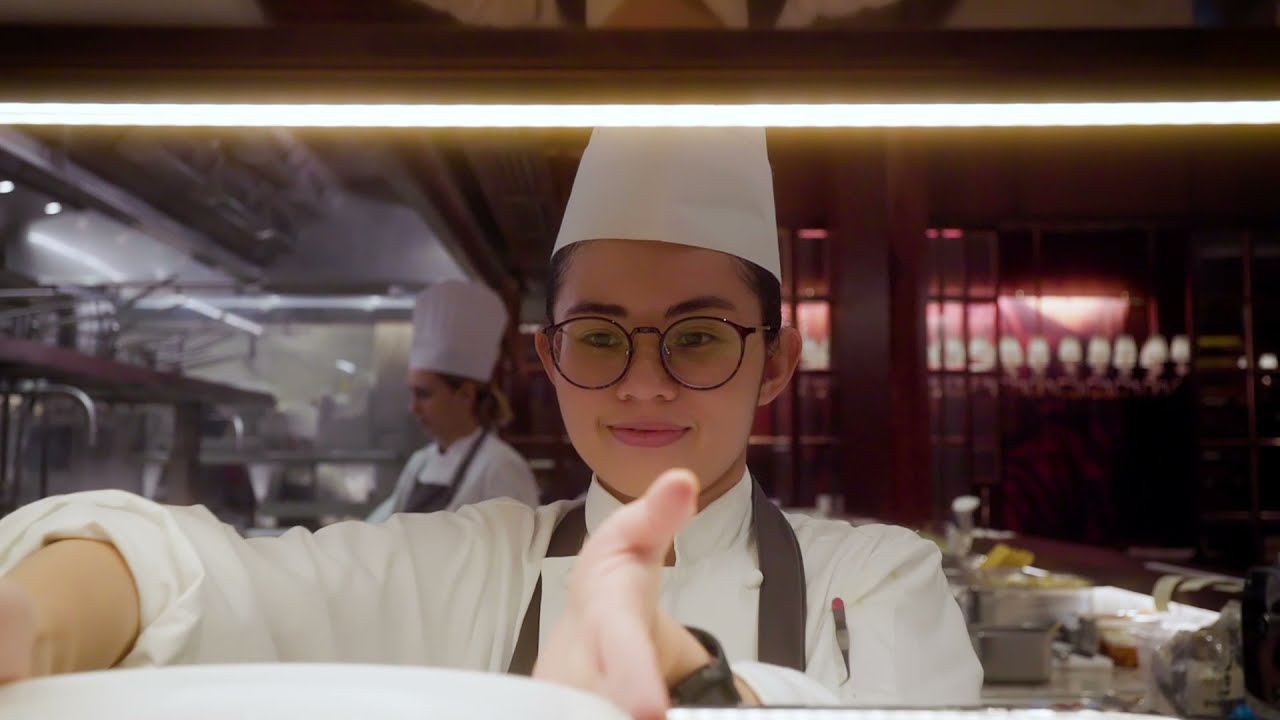The chef’s table at a restaurant is located in the kitchen of the restaurant. It is reserved for VIPs, such as restaurant owners and executives, as well as for special guests of the Executive Chef. Guests who request this table can observe the preparation of their meal and may ask questions. They can also taste the meal themselves. At a restaurant, the chef’s table can be one of the most enjoyable dining experiences.
Often, the chef’s table is located in the kitchen, which frees up valuable workspace. These tables can be arranged to seat two or three people, and they can be reserved for a dinner party. However, guests should keep in mind that these tables are generally small, and the chef may not have enough time to prepare a full menu. Guests should also be prepared to wait at least one hour, and the chef’s schedule is typically packed.
The chef’s table concept originated in the kitchen, and in some cases, chefs entertained their friends and family in the kitchen. At first, they sat at a small table that was in the back of the kitchen, but eventually became an exclusive experience. As the concept grew and became more refined, restauranteurs across the world started offering it to more regular customers. The results of these events vary greatly from one restaurant to another, but a chef’s table experience should be a memorable one.
Number of guests at a chef’s table
Previously, the chef’s table was reserved for upscale fine dining restaurants and reservations were necessary months in advance. But today, this unique dining experience is available in upscale casual restaurants, too. As more chefs experiment with the ingredients they have on hand, more restaurants are incorporating this unique concept into their dining experience. And guests love getting to see the chefs at work. Here’s what to expect at a chef’s table.
The chef’s table began as a way for chefs to entertain family and friends in the kitchen. It became a luxury that everyone could reserve. The parameters for a chef’s table vary by restaurant and venue, but chefs across the world agree that the table should be located in the kitchen so that guests can experience a full-fledged culinary experience. Today, however, a chef’s table is more popular than ever.
The Sponsor will not extend the certificate’s expiration date. It will not provide a gift certificate for any other purpose than to make the certificate valid for the designated restaurant. Also, the Sponsor is not responsible for typographical errors, technical failures, or human error in the printing process. The certificate is valid only for the person named on it and is non-transferable. Employees of the Sponsor and its related companies are not eligible to participate in this offer.
The restaurant also has a private kitchen in the basement of the restaurant, accessible by a door outside the restaurant. The chef’s table can accommodate between two and ten guests. During busy periods, the number of guests at a chef’s table may reach up to 10 people. The chef’s table also benefits from the added attention of the staff, including communication between the chef and diners.
Location of the table in a restaurant’s kitchen
The location of the chef’s table in a dining room is usually separate from regular dining tables. This allows restaurant guests to watch chefs prepare food, while the chef is not visible to the other customers. While there is usually only one table at a chef’s table, it can be an excellent option for private dining or entertaining. Chef’s tables can be an elegant way to host a dinner party, as the staff will make you feel like royalty.
The origins of the chef’s table lie in its humble beginnings. It began as a private dining experience for chefs and their families. In time, however, the chef’s table evolved from an exclusive experience for VIPs to a luxury that everyone could reserve. Although the parameters of the chef’s table vary by restaurant, chefs worldwide agree that it should be located in the kitchen to provide the ultimate dining experience.
While chef’s tables once were exclusive for VIP diners, many have evolved into more approachable counters and private dining rooms. In addition to the traditional chef’s table, many restaurants now have platforms that facilitate meetings between the chef and gastronomes. The resulting meetings can be as intimate or as hygienic as the host’s preferences and expectations. Regardless of where the table is located in a restaurant, a chef’s table will give you the chance to see the chefs at work, and they can communicate with each other through video.
Characteristics of a chef’s table
A chef’s table is a special seating area located in the kitchen of a restaurant. Guests at this table can watch the chefs prepare their food while they are at work. The staff can make guests feel like royalty while they enjoy their meal. Generally, a chef’s table has a limited number of seats. This type of seating is seasonal or temporary. If you’re interested in trying this dining option, be sure to contact a restaurant in your area.
Many restaurants have minimum and maximum numbers of guests for chef’s tables. You’ll find that if you’re trying to get a reservation at a restaurant without a chef’s table, you won’t get it. Most chef’s tables seat six to eight people. These tables have ample space for the chefs to prepare and serve their dishes. In addition, they often feature bar-style seating, which requires less space than a traditional dining table and chair set.
The Pearl Hotel in San Diego has a chef’s table in the kitchen, which features sustainable ingredients. Staff members will offer suggestions for wine pairings, as well as cocktails created in-house using seasonal products. Angela Raynor, who co-owns the restaurant, has a chef’s table that welcomes guest input. In addition to the chefs’ table, the guests can view the kitchen from the mullioned windows.
